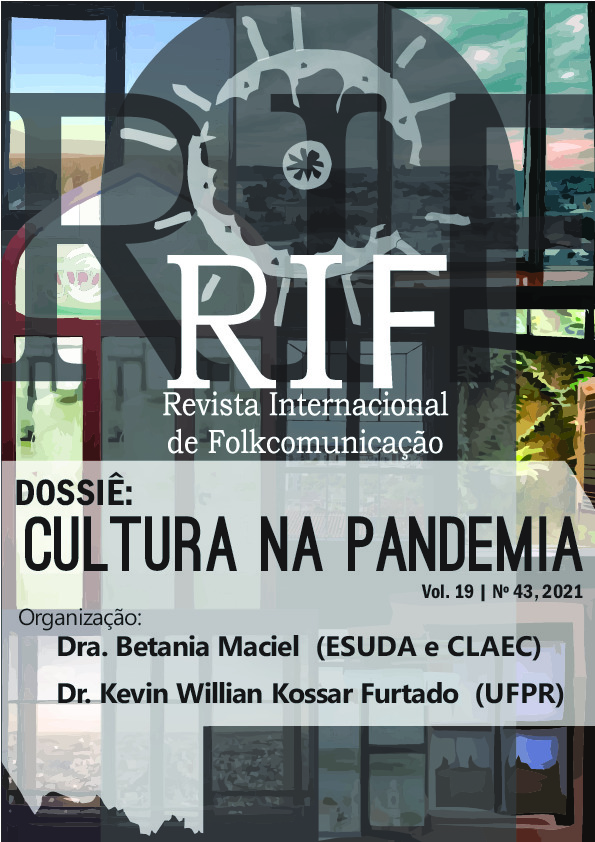The Silence of Sapucaí and the noise on the internet:
Space-time relationship during the carnival of the pandemic
DOI:
https://doi.org/10.5212/RIF.v.19.i43.0011Abstract
In view of the adversities caused by the recent experience of the Covid-19 pandemic, the purpose of this article is to discuss the absence of the samba school parades in Rio de Janeiro based on the experience of an internet transmission during carnival days, in February 2021. When analyzing a Youtube channel called “Boi com Abobora”, which uses images from ancient carnivals to broadcast in the present time, the work discusses notions of nostalgia and memory. The shuffling of narratives, new cuts and a suppression of contemporary time cross this object, which make us think about cultural identity as a link to the social collective, or the creation of a sense of belonging. As a methodology, we empirically explain the object, how the transmission was carried out and its characteristics, to then discuss how this experience alleviates the damage caused by the social distancing caused by the pandemic. Such activity leads us to present, among the results, a reflection on the impacts and transformations of culture, even when popular demonstrations were apparently suspended. Thus, it is concluded that cultural forces, in times of pandemic crisis, remain in their maximum tone, that of making themselves present as a form of link and social belonging.
Downloads
Published
How to Cite
Issue
Section
License

Este obra está licenciado com uma Licença Creative Commons Atribuição 4.0 Internacional.
Os autores são responsáveis, em qualquer que seja o formato do texto, pelas opiniões expressas ou indiretas presentes em seus respectivos trabalhos, não endossáveis pelo Conselho Editorial e pelos editores da Revista, bem como pela autenticidade do trabalho. Ao publicar trabalhos na Revista Internacional de Folkcomunicação, os autores cedem automaticamente os direitos autorais à publicação para veiculação das produções acadêmicas, sem ônus para a Revista. Os autores detêm os direitos autorais do texto para o caso de publicações posteriores e concedem à Revista Internacional de Folkcomunicação o direito de primeira publicação, com o trabalho simultaneamente licenciado sob a Creative Commons Attribution License, que permite o compartilhamento do trabalho com reconhecimento da autoria e publicação inicial nesta Revista. Por serem publicados em revista de acesso livre, os artigos são de uso gratuito, com atribuições próprias, em atividades educacionais e não-comerciais, sendo permitida a publicação simultânea em repositórios institucionais.




























